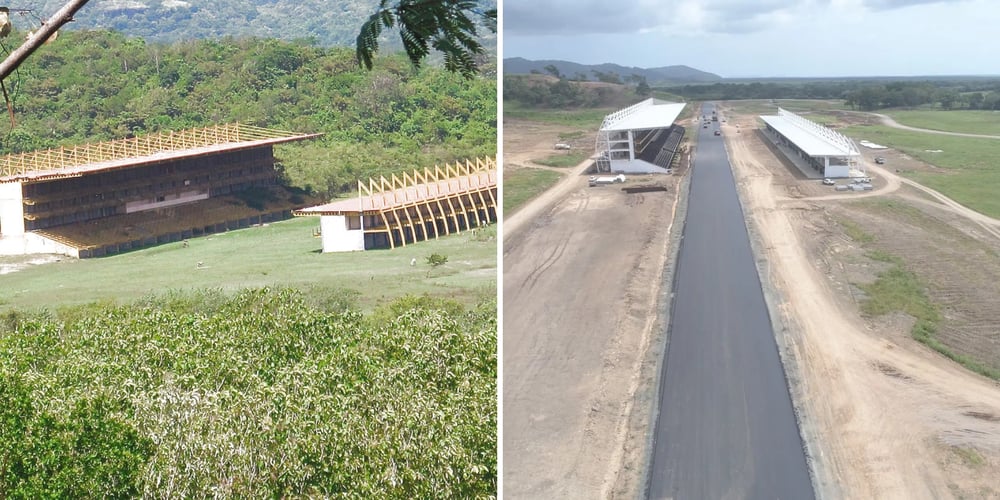The Ambitious Tunnel Project of Panama's New Metro Line
The Line 3 of the Panama Metro is one of the ambitious projects currently underway in the country, set to directly benefit thousands of residents in the province of Panama Oeste. This project is divided into two phases: the first phase extends to Ciudad del Futuro in the Arraiján district, housing the line's Yards and Workshops. The second phase stretches further to La Chorrera.
The proposed route of Line 3 commences at Albrook Station, traversing Arraiján, Nuevo Chorrillo, and culminating at Ciudad del Futuro. In its initial phase, it covers a distance of 24.5 kilometers, featuring a total of 14 stations. Notably, the route includes an underground segment spanning approximately 5.3 kilometers.
Efforts have been made to optimize the route, minimizing inclines and expanding turning radii to ensure optimal performance of the monorail system.
Of particular interest is the construction of the tunnel that will pass beneath the entrance of the Panama Canal on the Pacific side. This tunnel project will run in parallel with the remaining aerial section of Line 3 and is expected to take between 24 to 30 months to complete.
This information was confirmed by the Minister of Public Works (MOP), Rafael Sabonge, who noted that the underground excavation had already begun with the west-side attack trench, an eight-month phase.
Recently, it was announced that the China Railway Tunnel Group Co., LTD. (CRTG) would oversee the operation of the tunnel boring machine responsible for creating this underwater connection, which will reach depths exceeding 60 meters.
Initially, the Panama Metro had considered treating the tunnel project separately from the construction of the western aerial section of the line. However, later on, they decided to assign it to the South Korean consortium, HPH Joint Venture, which would also take responsibility for the tunnel.
After a selection process, HPH Joint Venture chose a Chinese company specializing in tunnel and underground engineering for this significant undertaking.
The tunnel boring machine responsible for connecting Line 3 of the metro to the capital beneath the Panama Canal's entrance is expected to arrive in September, according to Minister Rafael Sabonge. Assembling such a machine can take between three to four months. In the meantime, work on the "attack trenches," from which the tunnel boring machine will commence its operation, must progress.
Minister Sabonge, who also serves as the chairman of the metro's board, informed that the construction of these trenches is set to begin soon on the west side, near the entrance to the Panamá Pacífico area.
"The tunnel itself starts from the attack trench and will commence once the tunnel boring machine is assembled, which is a process taking three to four months. But the work will begin in this administration," assured the Minister of MOP.
In a mid-March interview, Metro Director Héctor Ortega estimated that tunnel construction would commence in January 2024, aligning with the timeframe now provided by Rafael Sabonge.
The construction of the attack trench, however, has experienced delays. Ortega originally projected its initiation in April, but as per the Minister of Public Works, it has yet to begin.
The underground section of Line 3 spans 5.3 kilometers, from Panamá Pacífico to Balboa, featuring an underground station. To put this into perspective, Line 1's underground section covered 6.7 kilometers and was excavated using two tunnel boring machines, a process lasting a year and a half.
However, it's crucial to note that Line 3's tunnel will reach a greater depth (66 meters) than Line 1's, as it passes beneath the Panama Canal's Pacific-side channel.
As of the end of June, the aerial section of Line 3 had progressed to 39%, according to the state-owned company overseeing the project. The tunneling project represents a significant step forward in the development of this transformative metro line, offering improved transportation options for residents of Panama Oeste and beyond.
.png?width=600&height=240&name=Untitled%20design%20(23).png)


